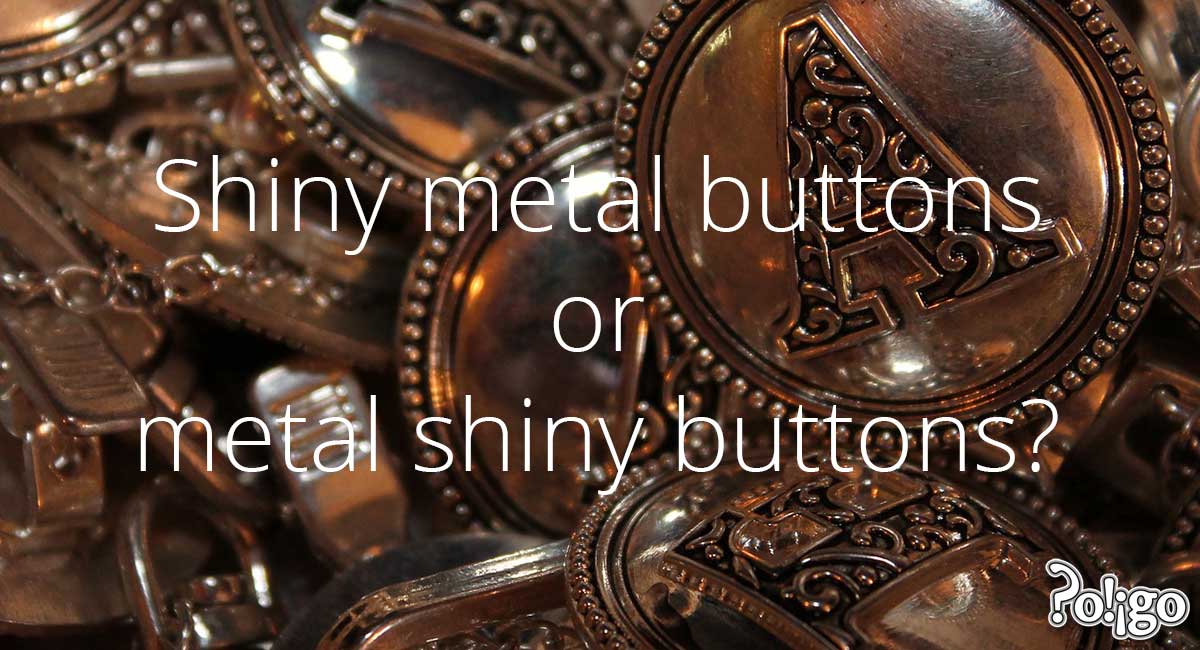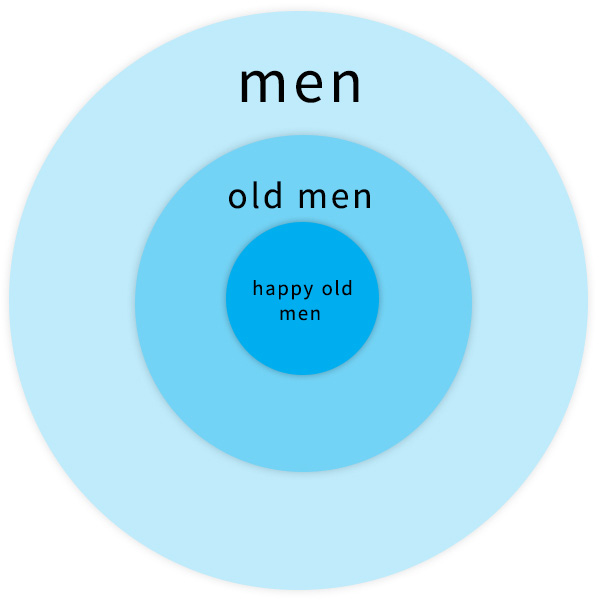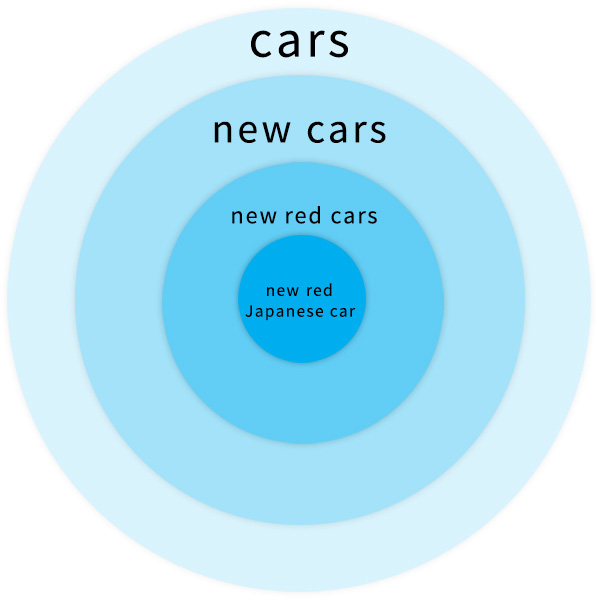
It's "shiny metal buttons" not "metal shiny buttons". Why? When you have more than one adjective before a noun in English, there is a natural order. For example, if I know a man, and he is happy and old, he is a "happy old man". "Old happy man" is not natural.
The idea behind this is simple, but not obvious.
As a rough guide, the more general, less variable thing goes last in the list (closer to the noun) and the more specific, more variable adjective comes first in the list. Thinking about the happy, old man, age cannot vary. It is less variable. But there are lots of old men, and some are happy and some are not. Emotion is more specific. Your mood can change. You might be happy today and sad tomorrow. "Happy" should come before "old".
Another way to look at it is that the more factual and neutral the description, the closer it is to the noun. If the adjective is subjective and based on opinion, it comes first.

Adding more adjectives makes the description more specific. Take another example: the new, red, Japanese car. If a car is Japanese, that cannot change—a Toyota cannot become a BMW. Red is slightly less fixed. It's red now, but you could paint it. Likewise, newness is a thing that can change. And it changes naturally over time. Your car is new today, but in a few months or so, it isn't new anymore. Age is more variable than colour—it's easier for a new car to get old than it is for a red car to turn blue.

This is the list of types of adjective and the order they come in:
| Order | Adjective |
| 1 | number |
| 2 | opinion |
| 3 | size |
| 4 | shape |
| 5 | texture |
| 6 | age |
| 7 | colour |
| 8 | pattern |
| 9 | origin |
| 10 | material |
| 11 | brand |
| 12 | purpose |
| LAST | NOUN |
So how do you deal with this? If the above thinking makes sense to you, you can make a pretty good guess. Or you can memorise some rules.
Method 1- The Easiest Way
Choose the most common types of adjectives you like to use from this list:
| opinion | colour | age | brand |
| number | origin | material | pattern |
| shape | size | purpose | texture |
Say you choose colour, origin, size and purpose. Cross the rest off this list like we did below (if you want, print this page and do the right column).
| Order | My list | Your list |
| 1 | number | |
| 2 | opinion | |
| 3 | size | size |
| 4 | shape | |
| 5 | texture | |
| 6 | age | |
| 7 | colour | colour |
| 8 | pattern | |
| 9 | origin | origin |
| 10 | material | |
| 11 | brand | |
| 12 | purpose | purpose |
Then make lots of examples with your list, like I have below. Look around you. It helps if you describe your own things or the things you know:
| size | colour | origin | purpose | NOUN | |
|---|---|---|---|---|---|
| a | small | green | cabinet | ||
| our | little | Japanese | car | ||
| his | white | running | shoes | ||
| a | huge | black | sports | bag |
The memorise the examples in a sentence.
- "I bought a small green cabinet from Ikea."
- "We have had our little Japanese car for a year."
- "He left his white running shoes at school."
- "I put all my things in a huge black sports bag."
And keep doing that until you get it.
Method 2 - I Have an Amazing Memory
This is the master list! If you have a good memory and time to practice, remember it.
| number | opinion | size | shape | texture | age | colour | pattern | origin | material | brand | purpose | NOUN |
|---|---|---|---|---|---|---|---|---|---|---|---|---|
| seven, | ugly, | little, | round, | smooth, | old, | yellow, | striped, | French, | gold, | Dior, | decorative | buttons |
However, an example like this NEVER happens. Besides, it is too much to remember on the fly. So, the list can be reduced to something like this for people with good memories:
| opinion | size | shape | age | colour | origin | material | purpose | NOUN |
|---|---|---|---|---|---|---|---|---|
| ugly, | little, | round, | old, | yellow, | French, | gold, | decorative | buttons |
Practice!
You can find some good practice exercises at the ELC Study Zone and Better English.
- Incorrect order is not a fatal error. People will still understand you, but if you get this wrong you just sound a little unnatural. No big deal.
- There is some logic to the order, but I am not sure it holds up completely. You must just memorise the order. Use the technique that is best for you.
- Since there is no simple rule, then plenty of experience and practice and thousands of examples will get you to the point when it just sounds right. That's how native speakers know this. They have heard it so many times, when it is wrong, it just sounds wrong. Try asking a native speaker if they know the list of categories and the order! In fact, a tweet about this went viral in 2016:
Things native English speakers know, but don't know we know: pic.twitter.com/Ex0Ui9oBSL
— Matthew Anderson (@MattAndersonNYT) September 3, 2016
- It's "shiny metal buttons" not "metal shiny buttons"!
- Sometimes you have to use commas with adjectives when they come before a noun. This is not that case. It's complicated, and I haven't figured out a good way you can judge whether you need a comma or not if you are not a native speaker (the test is: "If you switch the adjectives around, does it still sound OK?" If it does, then you need to use commas. The trouble is that if you are not a native speaker, you don't know that. I will have to think about this one.




